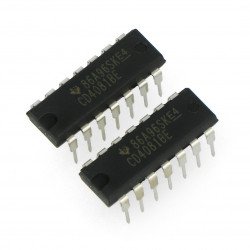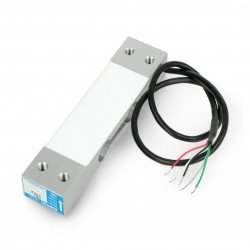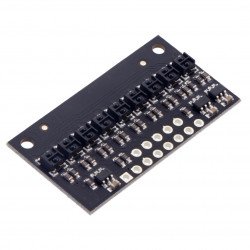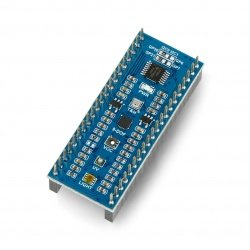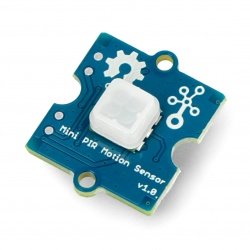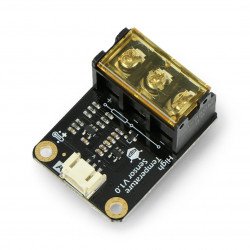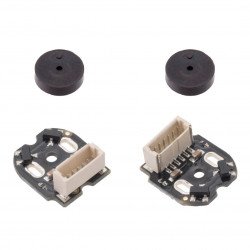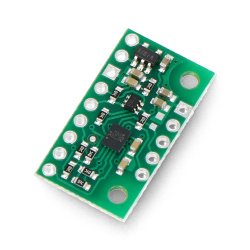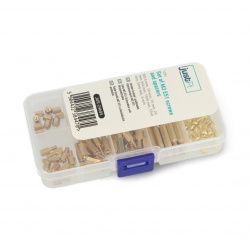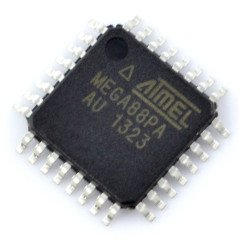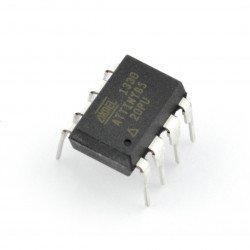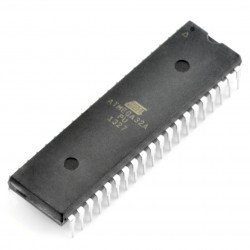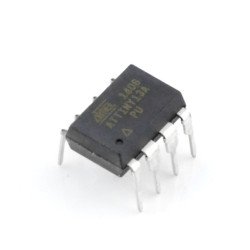AVR microcontrollers are part of the group of eight-bit microcontrollers. They were designed and created for young students from the Norwegian University of Technology. Currently AVR microcontrollers are often used by hobbyists. They are used in basic projects, although they are also chosen for more advanced systems. They are great at learning to program, which is due to their ease of use and mechanism of operation and speed of installation. The BASIC language compiler for these microcontrollers is conducive to amateur projects, which is appreciated by beginners in electronics and robotics. AVR microcontrollers come in different variants. You can opt for AVR SMD microcontrollers with surface technology. They are great for logic even in small devices. The alternative are THT chassis SMD microcontrollers recommended especially for more advanced and experienced users. Check our offer and adjust the microcontrollers to the level of your project, as well as your skills and capabilities.
AVR microcontroller - ATmega32A-AU SMD
Popular microcontroller AVR from ATmel in a case soldered on surface (SMD).AVR microcontroller - ATmega128A-AU SMD
Popular microcontroller ATmega128a-AU from ATmel AVR family in a case soldered on surface (SMD).- Sale
- SPECIAL OFFERS
AVR microcontroller - ATmega8A-AU SMD
Atmel microcontroller AVR with 32-led case soldered on surface - SMD. Voltage supply range from 2.7 V to 5.5 V, frequency up to 16 MHz, has 8 KB Flash, 1 KB RAM, 512 bytes of...AVR microcontroller - ATmega16A-AU SMD
Popular AVR microcontroller from ATmel in a case soldered on surface (SMD).Microcontroller AVR - ATtiny13A-SSU
Microcontroller Atmel AVR in 8-leg case soldered on surface - SMD. Voltage supply range from 2.7 V to 5.5 V, with a clock signal frequency to 20 MHz, 1 KB Flash, 64 B RAM, 64 B...AVR microcontroller - ATmega16A-PU - DIP
Popular microcontroller AVR from Atmel in a DIP case.AVR microcontroller - ATmega328P-AU SMD
Microcontroller AVR from Atmel in a case soldered on the surface (SMD was also used in the popular Arduino module).AVR microcontroller - ATtiny2313A-PU
Atmel microcontroller AVR in 20-led DIP case. Voltage supply range from 1.8 V to 5.5 V, with a clock signal frequency to 20 MHz, has a 2 KB Flash, 128 B RAM, 128 B EEPROM.AVR microcontroller - ATmega88PA-PU DIP
Popular microcontroller AVR from Atmel in the case DIP28.AVR microcontroller - ATmega88PA-AU SMD
Popular microcontroller AVR from ATmel in the case soldered on surface (SMD).- Sale
- SPECIAL OFFERS
AVR microcontroller - ATtiny85-20PU
Microcontroller from Atmel AVR family in 8-feet long DIP package. Powered from 2.7 V to 5.5 V, clocked to 20 MHz, 8 kB Flash, 512 B RAM, 512 B EEPROM.AVR microcontroller - ATmega32A-PU - DIP
Popular microcontroller AVR from ATmel in a case DIP40.Microcontroller AVR - ATtiny13A-PU
Atmel Microcontroller AVR in 8-leg DIP case. Voltage supply range from 1.8 V to 5.5 V, with a clock signal frequency to 20 MHz, 1 KB Flash, 64 B RAM, 64 B EEPROM.AVR microcontroller - ATmega8A-PU DIP
Microcontroller from Atmel AVR 28-leg DIP case. Voltage supply range from 2.7 V to 5.5 V, frequency up to 16 MHz, has 8 KB Flash, 1 KB RAM, 512 B of EEPROM.AVR microcontroller - ATmega328P-U DIP
Microcontroller from AVR family from Atmel in the through hole case (DIP). It was used in the popular Arduino Uno module.A wide selection of microcontrollers from the AVR family
Our store's offer includes many different systems from the AVR family by Microchip. It is a family of 8-bit microcontrollers based on the Harvard RISC architecture. On the one hand, these microcontrollers are very simple to implement - many of the AVR family systems only need power supply (5 V or 3.3 V) to operate. These microcontrollers often have a built-in RC oscillator , which allows the generation of a clock waveform to clock the core. Additionally, AVR systems also have built-in RAM and program memory , as well as various optional peripherals . Thanks to such a high degree of integration, a microcontroller alone is often enough to operate the device. The AVR microcontroller is one of the most frequently purchased elements in our store.
AVR - Systems available in housings for various types of installation
Our store offers microcontrollers from the AVR family from Microchip in a wide range of different housings. Through-hole mounting systems (THT) are available, ideal for use, e.g. on breadboards, as well as simpler, larger PCBs and in surface-mount housings (SMD), often with a larger number of pins, but whose assembly is a little more complicated. complicated due to the smaller size of the legs. THT elements have from 8 to 40 pins, and in SMD housings from 8 to 64 pins.
A wide selection of systems with various possibilities
The AVR family is divided into two groups of systems - ATtiny and ATmega . These microcontrollers differ in the number of peripherals and the capacity of program memory and RAM. The ATtiny series systems generally lack interfaces such as a hardware serial port, have only one interrupt and are equipped with a much smaller amount of RAM and program memory. In turn, ATmega microcontrollers have one or more UART ports, two interrupts (or more) and a significantly larger amount of RAM. Additionally, ATtiny systems have a small to medium number of pins - GPIO - and ATmega systems have a medium to large number. Systems from both series of the AVR family are available in our store.
Various peripherals in AVR systems
The microcontroller consists of a central processing unit - CPU - RAM, program memory (usually ROM or Flash, currently less often EEPROM) and extensive input-output systems. In the AVR family, as well as in other similar microcontrollers, it is the wide selection of peripheral systems that gives them their strength in electronic systems. The AVR microcontrollers offered by our store are equipped with a very diverse set of digital and analog input and output systems. In addition to general-purpose digital I/O lines (GPIO), AVR systems also include other digital serial interfaces, such as UART, I2C or SPI, as well as USB (as a device). Analog inputs are also available - the system has a built-in analog-to-digital converter (ADC) with an input multiplexer. These microcontrollers also have built-in timers with the ability to generate waveforms with variable duty cycle (PWM), counters, etc.
AVR microcontrollers - FAQ
AVR is a family of microcontrollers developed since 1996 by Atmel, acquired in 2016 by Microchip Technology. These are modified 8-bit single-chip RISC microcontrollers with Harvard architecture. AVR was one of the first microcontroller families to use built-in flash memory.
To program the AVR microcontroller, you need an AVR programming tool. Examples of AVR programmers manufactured by Atmel include STK500, STK600, AVR Dragon, AVRISP mkII, JTAGICE mkII, JTAGICE3 and Atmel-ICE. You can also do it using the Arduino platform.
SD cards are constructed in such a way that after inserting the card into the reader, the appropriate pads are connected. Programming AVR microcontrollers works in a similar way. The circuit is often placed on a printed circuit board that has header pins to which the programmer connects. The header pin arrangement is standardized, although there are more standards.


















































































































